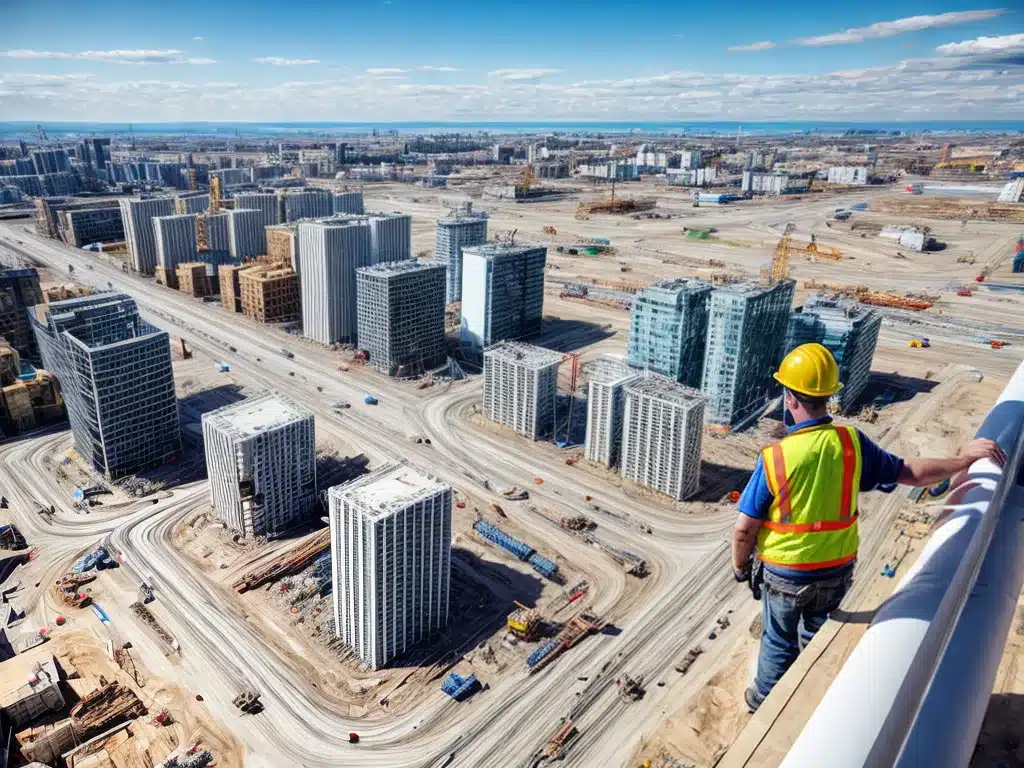
IoT in Construction: Building the Next Generation of Infrastructure
Introduction
The construction industry is on the brink of a digital transformation. Internet of Things (IoT) technologies are enabling the development of smart infrastructure and connected job sites. As a contractor, I see great potential for IoT to improve safety, increase efficiency, and reduce costs. In this article, I will discuss how IoT is impacting the future of construction.
Enhancing Safety
Safety is paramount in construction. IoT sensors can help create safer job sites by:
- Monitoring hazardous environmental conditions like gas leaks or excessive noise
- Tracking the location of workers and heavy machinery to prevent accidents
- Providing alerts when workers enter restricted areas
Wearable devices and equipment sensors also give insight into workers’ health and fatigue levels. Managers can use this data to ensure adequate breaks are provided. Real-time visibility creates accountability and encourages safe behaviors.
Improving Efficiency
IoT technologies boost productivity in several ways:
- Location tracking of equipment and materials reduces search times
- Sensor data analyzes workflow and identifies areas for process optimization
- Telematics capture vehicle usage and improve fleet management
- Automation handles dangerous or repetitive tasks more efficiently
Overall, IoT provides construction firms with the data to refine operations and workflows. The result is faster project timelines, reduced costs, and the ability to take on more work.
Enabling Connected Job Sites
A connected job site leverages IoT to integrate all construction operations. This provides complete transparency and creates a common operational picture. Key capabilities include:
- Asset management – Track equipment location and condition in real time
- Remote monitoring – Video feeds and sensor data provide visibility into all activity
- Supply chain integration – Materials are tracked from suppliers to the job site
- Communication – Workers can share documents, plans, and updates on mobile devices
By connecting assets, systems, and people, projects can be collaboratively managed for optimal outcomes.
Emerging Technologies
Several cutting-edge technologies are also making an impact:
- AI and advanced analytics – Machine learning algorithms drive actionable insights
- Digital twin modeling – Virtual models enable what-if simulations to test strategies
- Drone surveying – Drones with cameras and sensors can scan sites remotely
- Exoskeletons – Body suits prevent injuries for workers handling heavy materials
These innovations will shape the future of construction as IoT becomes more integrated.
Benefits of IoT Construction
Implementing IoT creates value across construction projects:
- Cost savings from increased efficiency and reduced waste
- Faster project timelines through improved coordination and workflow
- Enhanced quality with preventative maintenance and defect detection
- Higher safety for workers through wearables, sensors, and tracking
- Sustainability from optimizing energy and material usage
As technology improves, the benefits of IoT in construction will multiply.
Challenges to Adoption
Integrating IoT on jobsites also presents challenges:
- Upfront costs – Hardware, software, and training require investment
- Reluctance to change – Adoption may be slow for firms averse to new tech
- Data management – Infrastructure for data storage, security, and analysis must be built
- Interoperability – Devices and systems may lack integration and open standards
- Cybersecurity – Connected technology increases vulnerabilities to hacking
Companies must strategically budget and plan to overcome these hurdles.
The Future of Connected Construction
IoT represents the next stage in construction technology. As firms implement connected job sites, they will reap dividends through enhanced safety, quality, and productivity.
Integrating IoT requires planning and investment, but the long-term benefits are well worth it. Construction companies that embrace this shift will gain a competitive advantage and define the industry’s future.
While challenges remain, I am excited by the promise of IoT. Construction stands to be revolutionized by smart, data-driven technologies. As costs decrease over time, adoption will accelerate. I look forward to this new era of innovation in building the world’s infrastructure.












